 |
||
  |
  |
|
|
|
|
|
|
By Angela Verschoor.
For twenty-six years - from 1950 until 1976 - Lancia produced cars named after a number of roads. Not the road from Guildford to Portsmouth, but roads that made considerably more history about two millennia ago. The Via Aurelia, Via Appia, Via Flaminia, Via Flavia and Via Fulvia were all "motorways" built from 300 BC until 80 AD. It was a time when passenger travel was by foot, and freight was transported by ox cart. The roads in the Roman Empire were the backbone of a society that left its traces all over modern-day Europe. But where exactly did these roads lead to? In the period from 500 BC till 100 AD Rome grew from a small village on the banks of the Tiber river to an empire that stretched from England to Syria. Besides a military superiority over its neighbours, the most important cause for this growth was Rome's unique form of government. Every year two persons were elected to perform the function of head of state simultaneously. In this manner a society was formed that did not give room for any corruption a la Mafia, as was the case in surrounding towns and countries. All expenses were aimed at the expansion of the empire. As soon as an army had marched into an area, a road was constructed for the transport of supplies and reinforcements. As a rule these roads were named after the person who took the initiative to the construction.
|
Duemila anni fa' gli antichi Romani ebbero un grande lungimiranza quando chiamarono le loro strade con il nome di alcune delle piu' famose Lancia del XX Secolo. Sarei molto felice di poter pubblicare altri articoli e fotografie su queste antiche Vie. Probabilmente alcuni di voi vivono proprio lungo queste strade. Vi prego con tutto il cuore di spedire i Vostri racconti e/o fotografie a Huib Geurink |
 |
Via Appia The first road that was built in this tradition was the Appian Way, or the Via Appia as it is called in Latin. In 312 BC Appius Claudius took the decision to construct this road from Rome to Formia, a small country town about 90 miles south of Rome. The road was extended in later years, eventually to Brindisi, the main port for traffic to Greece. The road starts at the ancient city gate, nowadays called the Porto San Sebastiano. From there it runs in a dead straight line towards the southeast. Curves in the road meant walking a detour. They were only constructed if nothing else seemed to be possible. During the Roman era the Via Appia was the most important road of the empire. Apostle Peter, for instance, arrived in Rome coming from the Via Appia. Nowadays the original road still exists and is in use as a one way street. Immediately from the start of the road one gets the feeling that the city is already miles away, while in fact it's just between the city centre and the suburbs. Traffic is light and there are virtually no houses along the street. Because of its importance the first few miles of the road were preserved as a national heritage park from the Roman ages. Roman graves are scattered all along-side the road. In the Roman Empire, the dead were buried outside the city walls. Those who could afford it bought a grave near one of the main roads, preferably as close to the gates as possible. The road has preserved much of its original character through such monuments, for instance the catacombs in which many Christians were buried. Most of the road is tarmac, but just occasionally the original Roman pavement can be seen and be driven on. The modern through road is the Via Appia Nuova. It starts about a mile further on. There the traffic gets stuck in the rush hour every morning, just as in the rest of the city.
|
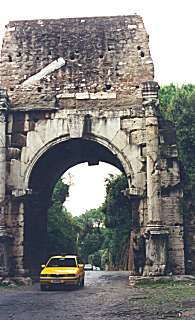
Via Appia |
|
Via Aurelia The Via Aurelia, on modern road maps called the SS1, suffers from the heavy traffic straight from its start at the Porta San Pancrazio in Rome. Almost nothing has been preserved from Roman times here, in contrast with the Via Appia. It dates from 241 BC when Aurelius Cotta commanded the road to be constructed. From the Vatican City the road leads to the north along the coast towards Livorno. Later on the road was extended to Genova and into France. The greater part of the section Rome to Livorno is nowadays a reasonably quiet dual carriageway. It is a good alternative for the often overcrowded Autostrada del Sole. Near La Spezia the landscape changes and becomes suddenly mountainous. Running through one of Italy's most beautiful areas, the average speed on the Via Aurelia is low. 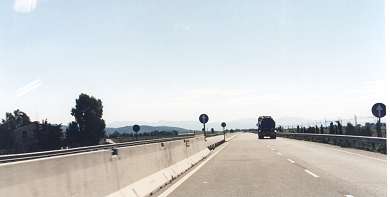
Unfortunately I didn't have the rest of my life to explore the road, so I took the latest version of the Via Aurelia: the autostrada A12. It is hard to find a more spectacular stretch of motorway. A few hundred miles with only tunnels and bridges, with a few rather sharp curves. As soon as the traffic permits, the actual mentality of the Italian car drivers comes up. At full speed (at least 90 mph, speed limit 60, sometimes 50 mph) almost everyone follows the ideal line over three lanes. Of course with the windows open to better enjoy the exhaust noises in the tunnels.
|
||
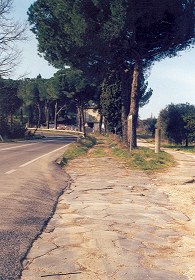
Pictures of the Via Flaminia by Ugo Gervasi |
Via Flaminia The coastal mountains are the reason why, during the Roman Empire, the main road to France and Spain was the Via Flaminia, not the Aurelia. This road leads upstream through the Tiber valley towards Rimini on the Adriatic Sea. The Via Flaminia was built by Gaius Flaminius in 212 BC. The socialist Flaminius proclaimed a number of measures for the poor, such as land reforms, revision of tax rates and the construction of a large stadium. He fell in a battle against Hannibal near Lake Trasimeno, not far from his 'own' road. His immense popularity becomes clear at the yearly commemorations that are still held in Umbria. Thereby Hannibal's elephant became the mascot of the Via Flaminia. What a great opportunity it would have been if Lancia had produced a Flaminia HF! 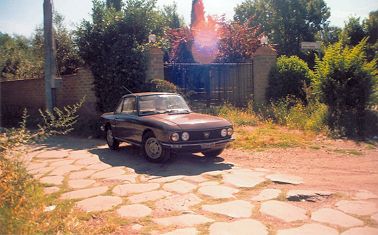
Over the years the traffic became busier and the Via Flaminia was modernised several times. Around 70 AD a tunnel was constructed in the road. Emperor Vespasianus ordered its construction to improve the traffic to the north. The tunnel is still in use. From Fano the road runs to Rimini, at the time the border between the actual Roman Empire and its colonies.
|
 |
|
Via Fulvia Rimini is the start of the second section of the main road to France. The Via Emilia leads dead straight to Piacenza. You can easily recognise the road on modern road maps. The influence of the Roman constructors is still great these days. The third section of the road to France runs from Piacenza to Rivoli, a suburb west of Turin. Quintus Fulvius had the road constructed in 179 BC. In accordance with the tradition the road was named the Via Fulvia. The original name is not in use any more, and there is hardly any evidence that is was an important road 2,000 years ago. Only in Villa di Foro, a village near Alessandria, excavations of the road can be found. It used to be a regional centre exactly halfway between Piacenza and Rivoli, and included hotels and a court of justice for travellers. Elsewhere hardly any remains of the Via Fulvia can be found.
|
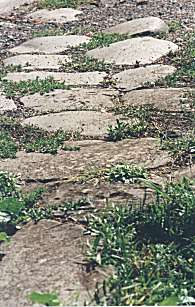
Via Fulvia |
|
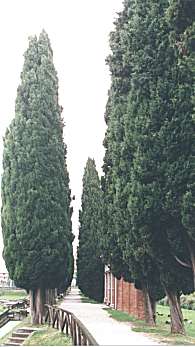
Via Flavia |
Via Flavia The Via Flavia shares a similar fate. The road was constructed in 78 AD by emperor Flavius Vespasianus. It leads from Aquileia halfway between Venice and Trieste to Pula in Croatia. Nowadays Aquileia is a small country village with one bar, a church and four butchers. But more than 2,000 years ago it was the capital of north east Italy until Ravenna became the navy port of the Roman Empire. The greater part of the village is occupied by an open air museum with excavations of the road. Hardly anything else remains, except that the main road from Trieste to Pula is still called the Via Flavia.
The Via Appia was the very first road to be named after the person who took the initiative to its construction. After the Via Flavia the Romans ended with that tradition. And Lancia, too, ceased naming their cars after Roman roads when the production of the Fulvia stopped in 1976.
Written by Angela Verschoor,
Note from your webmaster. The Romans had great foresight 2000 years ago, when they named their roads after famous Lancia's of the 20th century. I will be very happy to add more articles on and pictures of these roads. Some of you must surely travel on them one day. Some of you perhaps even live on one of them. Please, please, please. Send stories and / or photographs to Huib Geurink, |
|
|